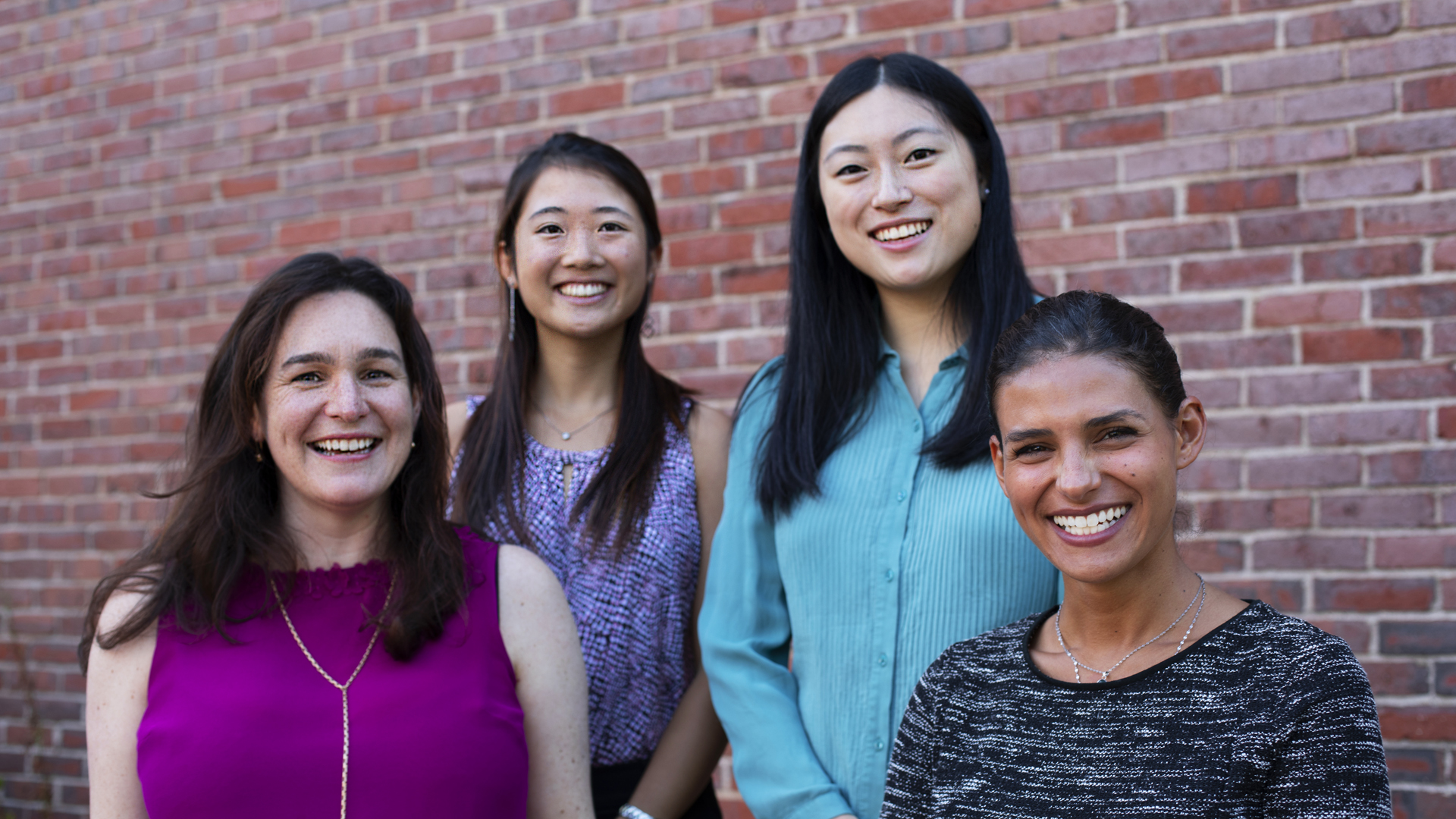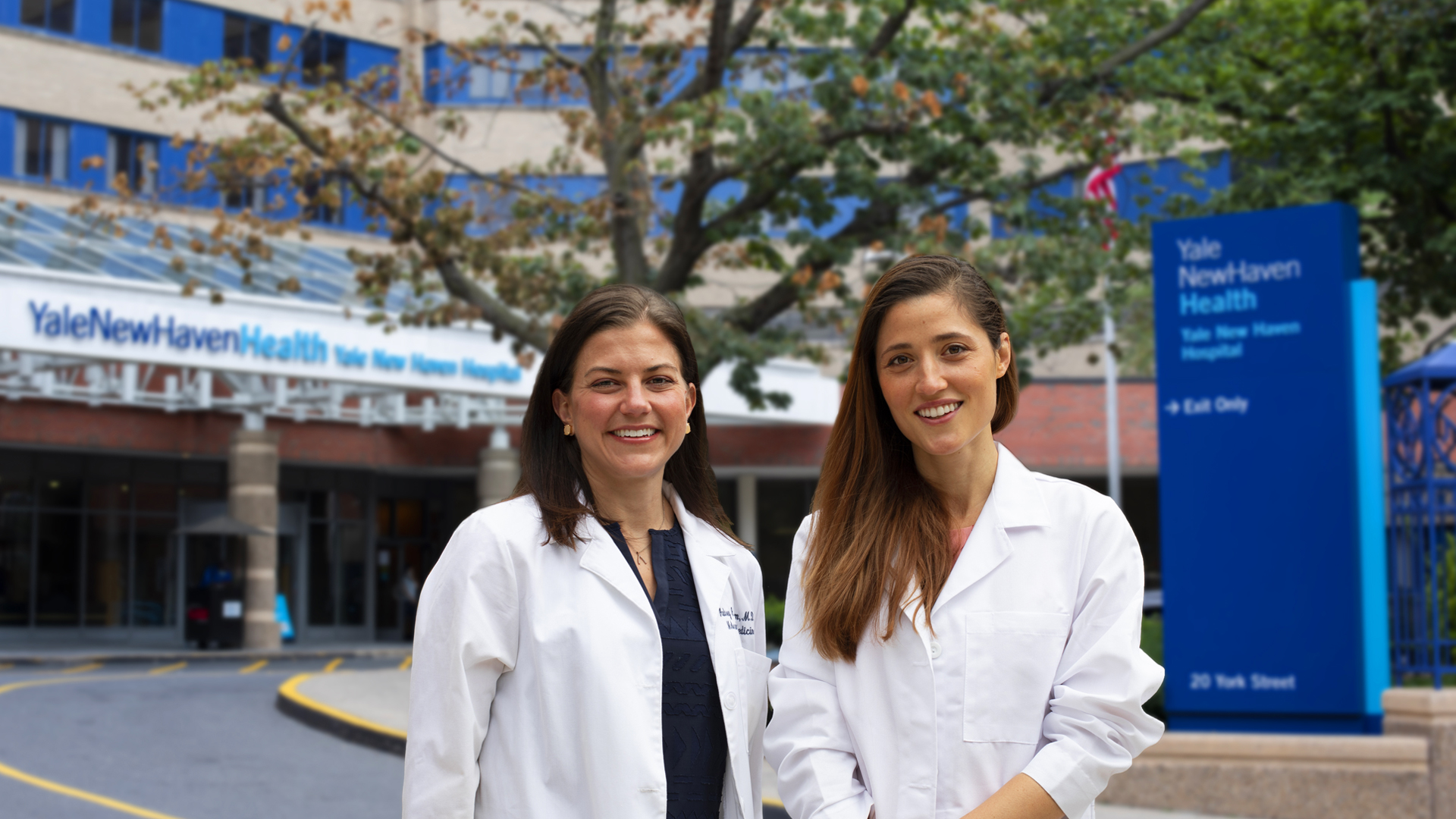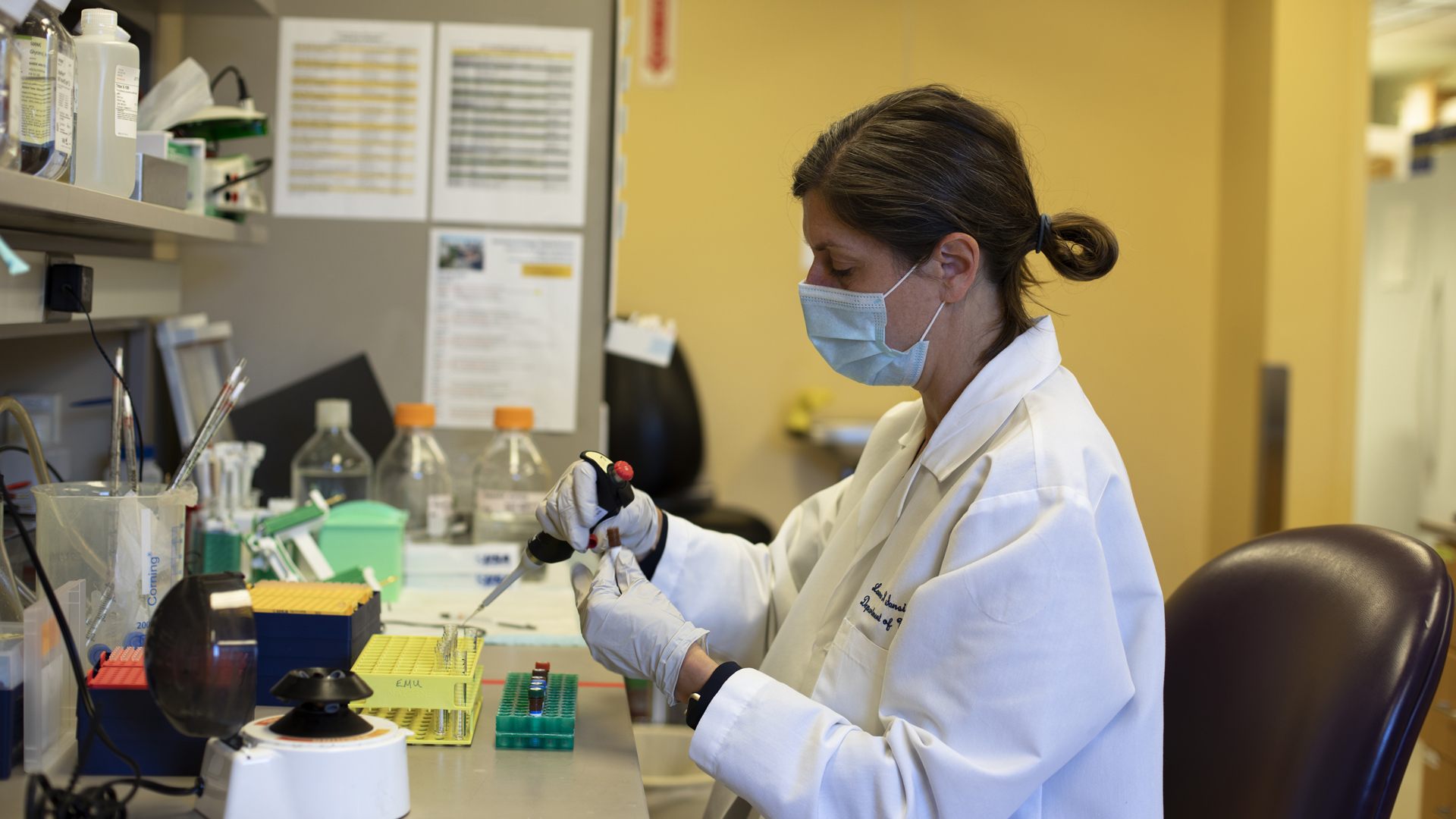Health researchers around the world are collaborating to combat COVID-19. Women’s Health Research at Yale joined the fight early, launching a study that found biological mechanisms in the body’s immune response that can put men at higher risk than women for more severe cases and death from the disease.
Even as this finding informs research on targeted treatments and vaccines for women and men, it highlights the importance of studying women and how sex and gender influence health. Not just when the world is focused on a deadly pandemic, but when examining all conditions and diseases.
Because we can do better.
In a recent study, scientists at The Women’s Health Research Institute joined with colleagues at Northwestern University and Smith College to review a sample of published papers from 2019 across nine biomedical fields. They found that out of 356 studies that included both female and male subjects, 27 percent did not provide a description of the sample size by sex. The articles included sex-based analysis of the data in only 42 percent of the studies, down from 50 percent in a similar survey conducted a decade earlier.
When we analyze data by sex and gender, we learn how diseases and conditions may affect women and men differently. If we skip this key step, we forego that understanding and are not able to provide individualized care capable of producing the best possible outcomes.
For 22 years, WHRY has filled gaps in our understanding of women’s health and sex-and-gender differences. Now we are intensifying our efforts to expand the depth and breadth of research needed to make science better so that we can improve and save lives. While continuing to focus on the impacts of COVID-19, the center has enlarged its research portfolio to include new projects on the prevention of endometrial cancer in a growing cohort of women at high risk, non-opioid pain management following a cesarean section for women with opioid use disorder who are in recovery, and sex differences in stroke.
Endometrial Cancer
Years ago, soon after finishing medical school, Dr. Clare Flannery saw a patient that she continues to think about often. The woman was 22 and had severe obesity requiring treatment with very high levels of insulin to overcome her body’s decreased ability to process this hormone, in a condition known as type 2 diabetes. She had also developed a condition common in women struggling with their weight called atypical endometrial hyperplasia (AEH), in which the uterine lining, known as the endometrium, becomes abnormally thick. Although this thickening itself is not cancerous, AEH develops into cancer 30 percent of the time. And women who struggle with their weight are at higher risk for developing AEH.
To prevent this high likelihood of cancer, doctors often prescribe a synthetic form of the hormone progesterone, called progestin. However, this treatment often fails to prevent the development of cancer. When this treatment is not successful and risk is high, women may have their uteruses removed through a hysterectomy, proactively eliminating the source of excessive tissue growth but also ending a woman’s capacity to bear children. The increased risk of cancer led Dr. Flannery’s patient to consider a hysterectomy despite her relatively young age and inspired Dr. Flannery to explore the mechanisms behind this transformation.
“It made me wonder if the insulin treatment was preventing her hyperplasia from resolving or potentially making it worse,” Flannery said. “I think about that patient all the time to guide my research. I want to have other options for these women.”
Every year in the United States, more than 60,000 women receive a diagnosis of uterine cancer, and 12,000 women die from the disease. This includes cancer of the endometrium. Premenopausal women are experiencing the greatest acceleration of endometrial cancer diagnoses. And overweight women have endometrial cancer rates that are double the rates of women who maintain a healthy weight. Rates for women considered obese are three times as great as those for women who are not obese or overweight, and more than 2/3 of adult women in the United States are considered either overweight or obese.
With a WHRY grant, Dr. Flannery, Associate Professor in Obstetrics, Gynecology, and Reproductive Sciences and in Internal Medicine (Endocrinology) and Co-Director of the Yale University Reproductive Sciences Biobank, is examining how changes in the uterine lining often associated with obesity develop into cancer, providing an opportunity for early intervention that could apply to all women with elevated insulin levels. In addition, her study is testing the effectiveness of an already available treatment to improve outcomes for women showing this early sign of endometrial cancer.
Her work is building a model focusing on two hormones that preliminary research has shown to produce AEH in premenopausal women who struggle with their weight: insulin and estradiol.
The main function of insulin is to regulate blood sugar levels and how the body stores glucose (sugar) and fat. In women who struggle with their weight, the body’s cells can develop a resistance to insulin, requiring increasingly greater levels of this hormone so that cells can release glucose for energy use. In addition, insulin is considered a growth factor, meaning it generally promotes the growth of cells. This can include beneficial cells but also cells that continue to grow out of control: cancer.
Many studies have demonstrated how estradiol in the absence of the protective effect of progesterone can stimulate the development of endometrial cancer. This risk is greater in women who struggle with their weight because these women often experience irregular menstrual cycles that may expose their endometrium to unopposed estradiol.
Using an animal model and stored samples of normal endometrial tissue and tissue from women with AEH, Dr. Flannery is conducting genetic analysis to understand on a molecular level how insulin and estradiol work together to disrupt cell physiology and create AEH and seeking biological clues for which types of AEH progress toward cancer. These data will be valuable for women who have difficulty with their weight as well as women of normal weight who have elevated insulin levels.
“In women with obesity, high levels of insulin appear to hijack the endometrial cells in a different direction, potentially toward cancer,” Flannery said. “If we can learn the mechanism behind this process, we can show a higher risk of endometrial cancer in women of normal weight but with elevated insulin levels and establish sufficient evidence to intervene with existing therapeutics for women of any weight.”
She thanked WHRY for getting this work started and anticipates producing results to support a large clinical trial of existing insulin-lowering medications in women with AEH for whom progestin therapies have failed and offering new hope to stop the progression toward endometrial cancer.
“In the United States, investigators might research several gynecological cancers and only dabble in endometrial cancer,” Flannery said. “My goal is to become one of the first investigators funded to only do endometrial cancer work and build a large program to help women with this disease.”
Opioid Addiction
In the midst of the global COVID-19 pandemic, our country continues to struggle with an opioid epidemic that has claimed 200,000 lives in the last two decades. This epidemic was fueled by overprescribing pain medications, a trend that affected women more than men and has resulted in prescription opioids becoming the primary route to opioid misuse and addiction by women in the United States.
Women suffer more acute and chronic pain than men, are commonly prescribed opioid medications to treat pain, and are given opioids at higher rates than men who report pain.
Dr. Audrey Merriam, an Assistant Professor of Obstetrics, Gynecology, and Reproductive Sciences and a practicing obstetrician-gynecologist, is using her WHRY grant to determine the safety and efficacy of a non-addictive steroidal medication to reduce pain and the need for narcotics. Her focus will be on women in recovery from opioid disorder who require a cesarean section delivery.
“Addiction is a chronic disease that affects many aspects of an individual’s life,” Merriam said. “Our goal is to change the standard of care for pain management in childbirth to ensure that everyone has the best opportunities for the best outcomes.”
Women often are given opioids when recuperating from the postoperative pain of cesarean section delivery, and women with opioid use disorder (OUD) in recovery require higher doses to overcome tolerance to the medications and achieve adequate pain relief, leaving them exposed to risk of relapse, infection, overdose, and death. This is true even for women in recovery who take medications such as methadone or buprenorphine to manage withdrawal symptoms and maximize health outcomes before and after birth.
“The postpartum period is a high-risk time for a lot of stressors, particularly for women after a cesarean section,” Merriam said. “There is the stress of the surgery, stress of having a new baby, and now the stress of COVID-19 and being isolated with that new baby. For someone working to overcome opioid use, there is significant risk of relapse.”
Women will receive a spinal block for the delivery, and Dr. Merriam will compare the effectiveness of a non-addictive steroidal medication, dexamethasone, to placebo as a supplementary medication after delivery. The goal is to determine if the drug’s anti-inflammatory properties reduce the daily and total need for opioid pain medications and reduce patients’ self-reported pain during their postpartum hospital stay.
“This treatment could decrease the risk of women being prescribed narcotics and becoming addicted,” she said.
In addition, a subsequent, larger study could include women without a history of substance use disorder and explore multiple administrations of dexamethasone to see if it lowers the amount of opioid medications women require after returning home to help them avoid the risk of developing an addiction.
Stroke
When Dr. Lauren Sansing was a medical student, her first research project involved a type of stroke called intracerebral hemorrhage (ICH), which occurs when a penetrating artery in the brain ruptures, filling the surrounding tissue with blood. The blood clot disrupts brain function, calling immune cells to the site of the injury and creating collateral damage.
“Many of the patients we were seeing did very poorly and did not recover,” Sansing said. “Observing the burden of this disease as a medical student and knowing we could offer nothing but supportive care made a big impression on me.”
Fifteen years later, survival from ICH has not improved. In fact, almost half of the 40,000 to 67,000 people who experience ICH every year do not survive beyond 30 days. Only about 20 percent are able to live independently six months later.
And yet, even as research has shown immune and inflammatory responses are different in women and men, the vast majority of laboratory studies on ICH have only been conducted on males.
Dr. Sansing, Associate Professor of Neurology and Academic Chief of the Division of Stroke and Vascular Neurology, is building on more recent studies that have included females and males to discover the differences in cellular inflammatory response after similar acute brain injuries.
“There have been studies on sex differences of cell activation and death pathways in ischemic stroke, which occurs when clots within blood vessels block flow,” Sansing said. “We know there are sex differences in the amount of injury that occurs. But few studies looking at this have been done in intracerebral hemorrhage.”
She is focusing on the various cell types that are activated in the brain after ICH to determine whether the communication between these cells lead to further injury or — as part of the body’s natural healing processes — to repair and recovery.
Sansing’s laboratory is using a technique called single-cell RNA sequencing (scRNAseq) in an animal model and with human tissue samples to capture differences in activation states across cell populations in the brain in a single set of experiments, allowing her to determine how cell states are altered across thousands of key types of immune cells in the brain. By analyzing global differences in populations and analyzing in-depth genetic differences within populations across sexes and ages, she is producing a detailed map of the ways in which all the cells involved in the immune response to ICH — inside and outside the brain — interact.
“When we are done, we will have a full picture of the cellular signaling network that we can compare between sexes and age groups,” Sansing said. “The beauty of single-cell sequencing is that we can see what genes these cells are activating and what functions they may have. Are they contributing to injury? Repair? How are they signaling to each other?”
Sansing suspects that older females have distinct cellular responses after ICH, including greater recruitment of specific immune cells than males. With this knowledge, researchers can work to manipulate pathways to prevent further injury and promote healing, tailored to achieve maximum benefit for a patient’s sex and age.
“Our goal is to find a pathway or many that might be differently regulated across sexes and then move into clinical trials,” Sansing said. “Then we can finally provide some effective, targeted relief for this devastating condition.”
